What Is a Forex Order?
A Forex order is a term that refers to how you will enter or exit a trade. Orders are trading tools needed in the Forex market. So learning what these Forex orders mean and how they are used can go a long way toward successful trading.
Market Order:
This is the most common order type in Forex market. It is executed at the best possible price available at the time the order is sent. It is called a market order because it's an order to buy or sell currencies at the current market price. This type of order is executed immediately since it does not specify a price.
Limit Order:
Unlike the market order, the limit order is placed to buy or sell at a certain price. It represents an order that opens a position at more favorable levels than the prevailing market price. If you’d like to buy below or sell above the current market price, a limit order would be the right type of order to use.
Stop Order:
Just like the limit order, a stop entry order is placed to buy above the market or sell below the market at a certain price. However, there are two types of Stop Orders:
Protective stop order (Stop - Loss) –
This is used to limit the amount of loss on an open trading position; it instantly closes a trade at a designated level of loss when the market moves against you. While stop losses can be painful when they're hit, they are critical to trading survival.
Stop order to enter into the market –
his is typically used for trading breakouts. For instance, if you think a rising EUR/USD will continue the upward move, you would place a Buy stop order above the current price. It will be executed only when the price rallies above the stop price. It is vice-versa in the case of sell stops. Stop Orders can turn into Market Orders when the market trades at that price.
Keep in mind:
-
Both Stop Orders and Market Orders are subject to slippage, while Limit Orders are not.
-
Always trade with stop-loss orders since they are the ultimate risk-limiting tools. Without them, traders are exposed to virtually unlimited risk.
-
All successful traders have lost money at one time or the other. Though painful, losses can be acceptable if they are kept relatively small in the first place.


